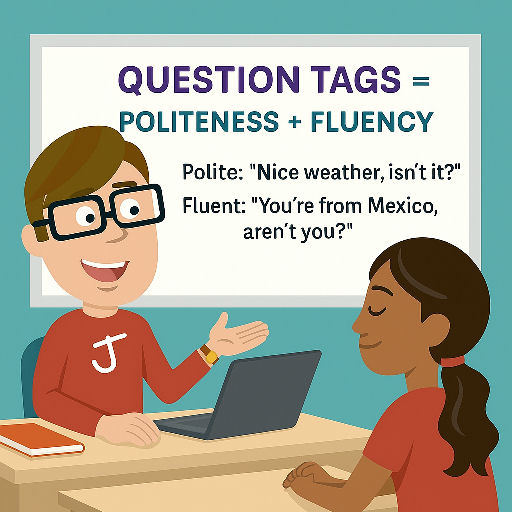A question tag is a short question added to a statement to confirm or check information. The rule is simple: positive sentences take negative tags, and negative sentences take positive tags. The auxiliary verb in the main clause is repeated in the tag (isn’t, haven’t, won’t, etc.). If there’s no auxiliary, use do/does/did. The subject always matches the pronoun in the tag. Special cases include aren’t I?, everyone…aren’t they?, and it/there forms.
Question Tags Part 1







